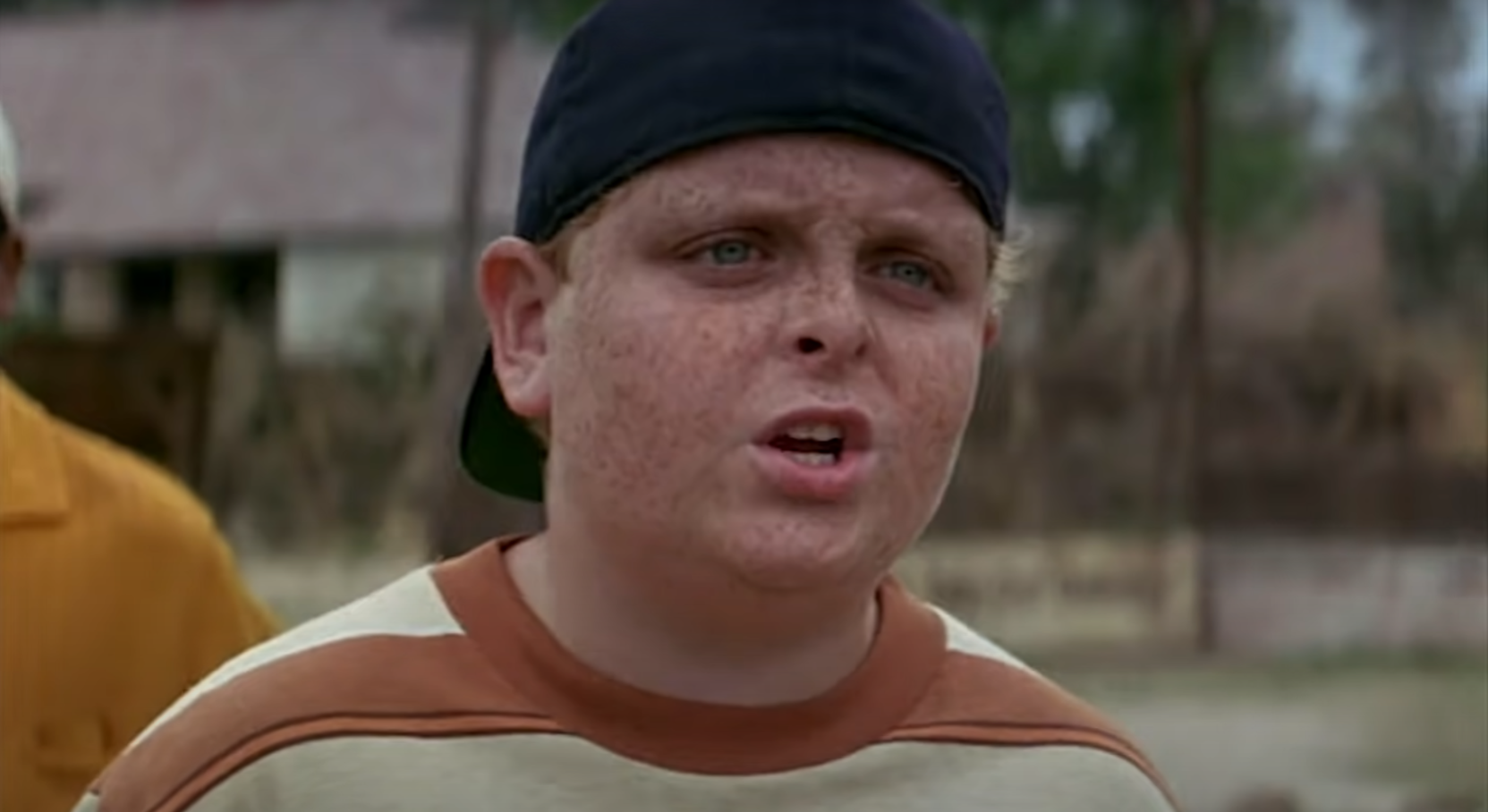


NRPLUS MEMBER ARTICLE T he Sandlot is 30 years and a few months old, I discovered. Meaning that we are now at a double remove from the substance of its story. The film is a feast of nostalgia for a baseball-obsessed childhood in the San Fernando Valley of the early 1960s.
The plot is simple: Fifth-grader Scott Smalls has moved into a new neighborhood. His mother gently encourages him to try to play with the boys in the neighborhood — a diverse crew of best friends who gather to play baseball on the local sandlot. The majority are skeptical of Smalls, but their leader and baseball prodigy “Benny” Rodriguez accepts Smalls. Over the course of the summer, they play baseball, have adventures chewing tobacco and going on carnival rides, and confront “the Beast” — an enormous backyard dog whose lair sits on the other side of the sandlot’s back fence. Smalls hits his dad’s baseball into the dog’s lair — the problem being that it is a piece of memorabilia with the signature of Babe Ruth on it.
The whole film is built around hyperbole and given a sheen of hyperreality. The summer vignettes are exaggerated either because our boyhood legends grow in the retelling or, I like to think, because a certain innocence and playfulness in childhood itself imbues life with epic grandeur. In The Sandlot, the dog seems the size of a car. An old blind neighbor is literally a source of terror, until he’s not. And in the final scenes, the film throws the boyhood fantasy forward. In the closing shots, we discover Smalls is an announcer for the Los Angeles Dodgers, the team on which Benny Rodriguez is now a star.
Even 30 years ago, its affectionate portrayal of boyhood in the 1960s was considered slightly politically incorrect, with critics noting that practically the only female roles we see are given to a supportive mother and a young girl that one of our gang of boys tricks into giving him mouth-to-mouth resuscitation. The worst insult among the boys is “you throw like a girl.”
When I saw The Sandlot as an eleven-year-old boy, the Sixties seemed like an impossibly ancient past: Erector sets where the Sega Genesis would be. PF Flyers instead of the Reebok Pump. But now I realize that my 1980s were closer to the ’60s than I knew.
Even in my boyhood, most play was still self-organizing and usually sex-segregated. I can recall only one playdate with a member of the opposite sex when I was in primary school, and it seemed to me in the moment a source of mutual discomfort and embarrassment, even though she sportingly tried to play my Nintendo games with me.
From almost any window on the front of our house, I could see if a game of Wiffle ball (not hardball) was developing in the park. Kids still rang doorbells to ask parents, “Can Michael come out to play?” My allowance for chores done — $5 — was enough for one or two days of getting Slush Puppies or Arizona Iced Tea at the corner store. Everyone else seemed to have the exact same kind of allowance and go for the exact same sort of treats.
Like the boys in The Sandlot, my friends scared themselves in order to test their bravery. An abandoned building would be fitted with legends of especially cruel dogs, child abductions, or even the paranormal, before we ventured in. The hyperreality of The Sandlot was just the same as that on Franklin St. And just like in the film, our impromptu gang rode our Huffy and Schwinn bicycles together everywhere, venturing out like little flocks.
The Sandlot isn’t a perfect film, but for boys on the cusp of adolescence, it functioned as a tribute — maybe a memorial — to our own boyhoods. And what was lightly politically incorrect in 1993 is politically unthinkable now. Nobody could make such a film today, which is why it remains among the top purchases and rentals on Apple TV+, and an enduring cult classic.
